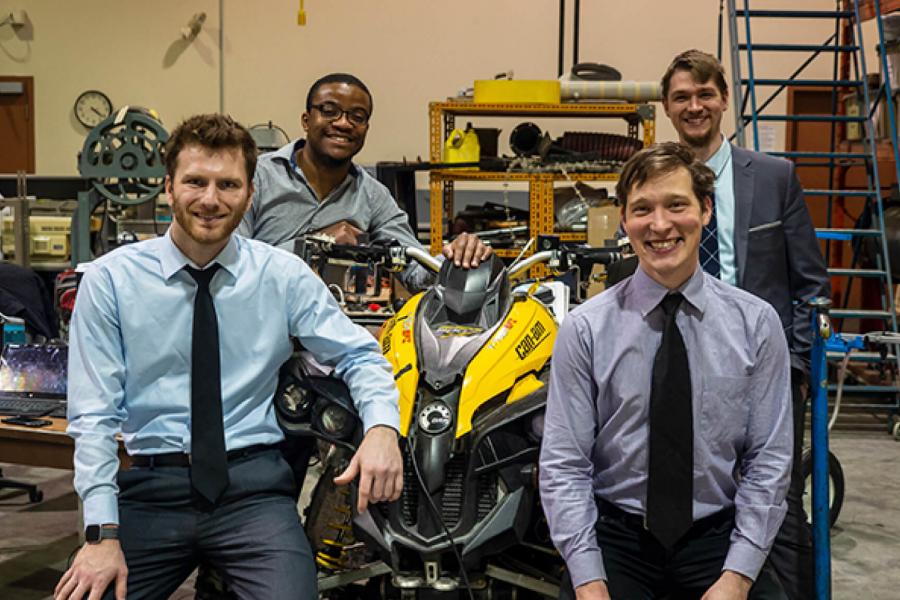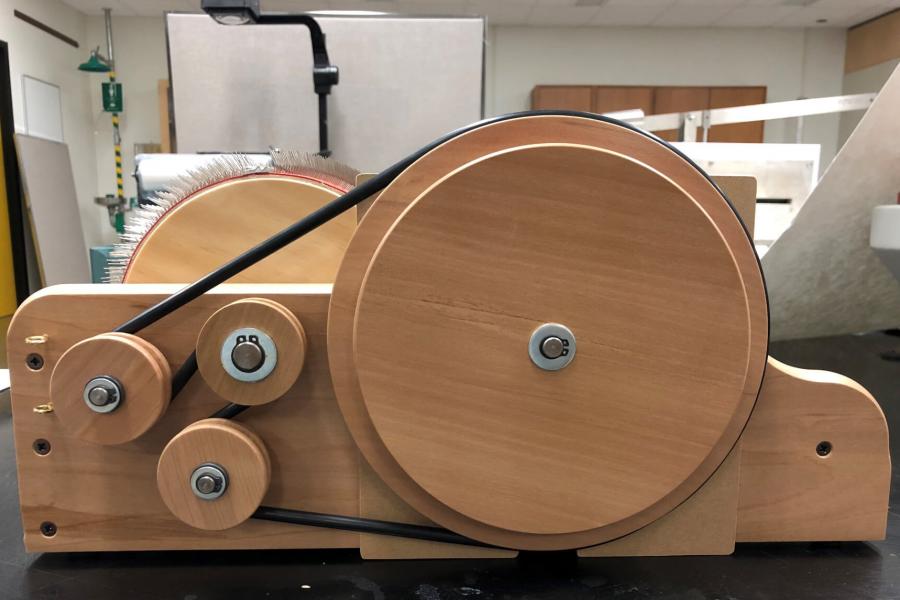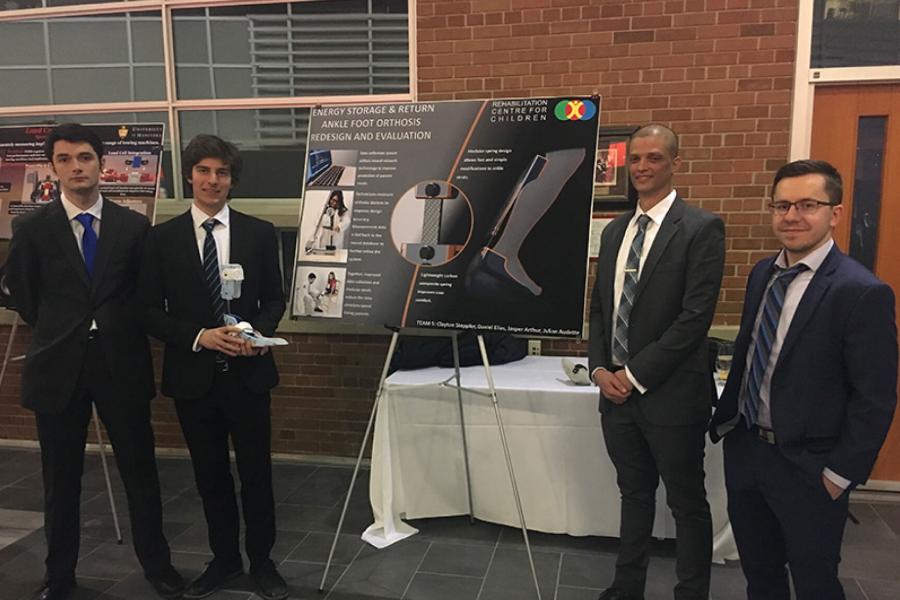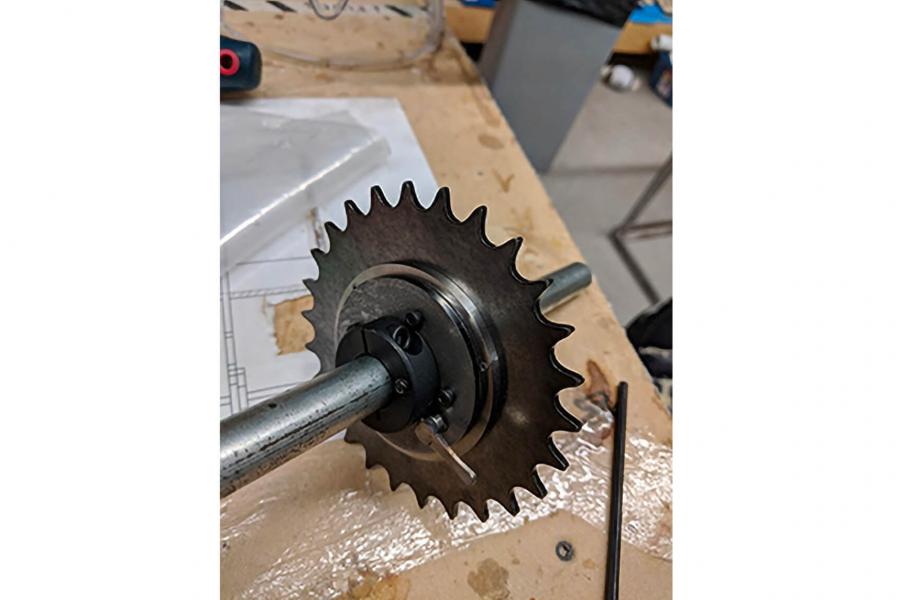The Capstone design course is a fourth-year mandatory class in which groups of four to six students collaborate to apply the design process to a real-world engineering problem. Teams spend time understanding and defining the problem, applying various idea-generation techniques and developing a report for an implementable design to be used by the sponsoring company. The progression of the projects is supervised by engineering professors and engineers-in-residence who act as internal sources of expertise.
UMIDEA Program
The UM Innovative Design for Engineering Applications (UMIDEA) program is an initiative to involve the local engineering industry with the education and training of engineering students. We work collaboratively with local companies to develop capstone design projects for UM engineering students to complete during their final year.

-
-
We help industry partners identify and scope suitable projects, prepare necessary application forms and assist with legal aspects of the collaborations. We also provide additional support to the Price Faculty of Engineering through the relationships we build with industry partners to aid in the students’ professional development and networking, as well as assist in various other capacities to foster an excellence in engineering education.
-
Key outcomes
Each year, the UMIDEA Program is fortunate to receive feedback from previous industry partners to contribute to continuous improvement. Over the last few years, we have compiled this feedback and found the four most common outcomes or take-aways of the program:
- New Ideas/Innovative Solutions/Fresh Perspectives
- Interactions with students and potential future employees
- A financially smart way to solve a real-world engineering problem
- A positive mentoring experience
-
Company requirements
Sponsoring companies must commit to:
- Allocating time to scope and select a project
- Providing availability during the span of the course to communicate and work with the students
- Up to an entire morning/afternoon for the initial meeting and site tour
- Up to two hours per week for the first month
- Up to one hour per week for the rest of the term
- Contributing a financial commitment of $1,750 for every project accepted (Financial Agreement sample)
How to become an industry partner
UMIDEA staff may reach out to you if have been previously involved in the program. Alternatively, you may contact UMIDEA staff to discuss a partnership. Once a potential project has been identified, we will set up a meeting to discuss project scope, student workload and learning outcomes to determine if the project is appropriate for the program.
During the meeting, we will draft an application with you, which you will have an opportunity to review.
- Submitted projects will be evaluated by both UMIDEA staff and the capstone course instructor. The submission deadline is the last Friday of July.
- Once a project has been accepted into the course, you will be notified by email with a funding agreement and invoice attached.
Project criteria
Our six project criteria exist to ensure that both graduating UM engineering students as well as industry partners gain as much as possible from their capstone design experience.
These criteria are used to assess each project submitted and gauge its overall quality. Each design project should strive to meet the below criteria in order to contribute to a valuable experience. We are happy to work with you to ensure a successful and rewarding partnership.
1. Challenge
The design problem must be sufficiently complex such that the “best” solution is not immediately apparent.
Groups of four to six students will use systematic problem solving and the engineering knowledge they have gained to iteratively solve the problem posed.
A good project will require the team to pool their existing knowledge together and thus, gain insight towards life-long learning.
2. Scope
A defined project scope will consist of specific needs, specifications (including metrics), constraints and limitations.
The more detail the scope contains, the better. Specific numbers, values and targets would be a preferred addition.
The company should be prepared to expedite this process to allow students the time to begin the creative and detailed design phases.
3. Creative
The design project must engage the student’s creative engineering process.
The main project problem will be open-ended in terms of how it is to be solved so as to not be overly restrictive in specific solutions.
The design team should be able to choose one concept/solution among many alternatives that best addresses the context of the problem.
4. End goal
From conception, the design project should have a well-defined end goal that the design team can work towards achieving.
This allows the team to measure whether they are on track to achieving the desired end goal for the industry partner.
The final solution to achieving the end goal will be presented in the form of a technical report and a final presentation. The biosystems course, as well as select mechanical projects that participate in Advanced Engineering Design (AED), will add a proof-of-concept to the output.
5. Industry engagement
A robust relationship is crucial towards providing a rewarding experience for both the industry partner and the students.
Open communication between the student design team and industry partner will ensure accountability and allow for a feedback mechanism in the design process.
The industry partner should designate an employee to work with the design team to ensure the project’s success and commit to meeting with the team on a regular basis throughout the term(s).
Time commitment varies depending on the group's needs, but can range from one to three hours per week.
6. Captivating
The Capstone design course is a key finishing component of an engineering student’s education, which students often look forward to.
The value of a truly great design project for the UM IDEA Program lies in its ability to create a memorable experience for the students.
Three key factors that make a project memorable are the hours spent, the work done and, above all else, the “cool factor.”
Biosystems Capstone
The Biosystems capstone course is an eight-month program in which students develop a feasible solution to an industry-provided biosystems design project.
-
Biosystems engineering-related design projects include topics such as biomedical devices, health and safety, bioresources and the environment. After the first four months, students will have developed a conceptual design – complete with drawings, cost estimates and a bill of materials. Throughout the next four months, the students develop a physical proof of concept using the department’s shop facilities.
-
The costs associated with producing the physical proof of concept are expected to be covered by the industry partner, who will receive the completed model and a written report describing the proposed solution. Industry partners are invited to attend the final end-of-term oral presentation at the end of the eight months.



Mechanical Capstone
The Mechanical capstone course is a four-month program in which students develop a feasible solution to an industry-provided mechanical design project.
-
Mechanical and manufacturing engineering-related design projects include topics such as thermal sciences, fluid mechanics, manufacturing and controls, material science engineering, applied mechanics, and production and operations research and improvement. Industry partners are invited to attend the final end-of-term oral presentation and are given an in-depth design report with which they can proceed to implement the proposed solution.
-

Advanced Engineering Design (AED)
This course is a continuation of the fall capstone design course into the winter semester where students will prototype, test and improve the design that was initially developed in the fall. Project sponsors continue to provide feedback on the design in order to ensure satisfaction of the final deliverable and finance the majority of the manufacturing and testing plan of the design.
The University provides support through:
- Manufacturing capabilities: Manufacturing processes completed on campus may fall under the creation of test rigs as well as minor machining to the prototype component during the testing phase.
- Testing space: Testing and work space for the students is the primary resource the university will provide as arrangements are made in an appropriate space of EITC.


Contact us
UMIDEA Program
Room E1-268 EITC
15 Gillson St.
University of Manitoba (Fort Garry campus)
Winnipeg, MB R3T 5V6
